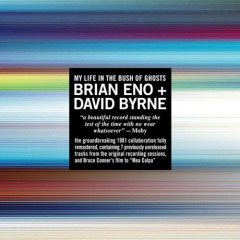My Life in the Bush of Ghosts
 One of the most counterintuitive bits I had to learn as a primal-minded adolescent is that more white people study African people than Black people study African people. A brother walking down a New York City street with scars on his cheek can be stopped like a celebrity by white folks who know that his scarification comes from a specific region in Africa. The bulk of us Black folk think he had some kind bizarre grooming accident with a hot perm iron. White people had to study African people. What is a necessary, imperial, intelligence-gathering exercise is become for many Europeans, worldwide, a lucrative source of genuine interest having nothing to do with total domination (but a little exploitation is irresistible).
One of the most counterintuitive bits I had to learn as a primal-minded adolescent is that more white people study African people than Black people study African people. A brother walking down a New York City street with scars on his cheek can be stopped like a celebrity by white folks who know that his scarification comes from a specific region in Africa. The bulk of us Black folk think he had some kind bizarre grooming accident with a hot perm iron. White people had to study African people. What is a necessary, imperial, intelligence-gathering exercise is become for many Europeans, worldwide, a lucrative source of genuine interest having nothing to do with total domination (but a little exploitation is irresistible).
In the rasx() context, David Byrne and Brian Eno come from this ‘genuine interest’ camp—this is the same camp shared by David Bowie, Peter Gabriel and a wealthy host of others (for today’s adolescents, Moby may come to mind). David Byrne and Brian Eno, their collaboration My Life in the Bush of Ghosts is the earliest presentation of the style of sampling on a “major release” that would inspire hip hop musicians without the benefit of knowing an ingenious Jamaican DJ personally. In fact, on the WMG website celebrating the newly remastered version of My Life in the Bush of Ghosts there is a prominent quote from Hank Shocklee saying just as much.
The impression I came away with My Life in the Bush of Ghosts was that the sampling was done by the “artists” themselves. They did not develop a library of samples from pre-recorded, commercial material. Again, my personal appeal to the future African cut creators out there is to find a wealth of sample material within the family. Zora Neal Hurston and Alan Lomax may be part of the brand new retro model we are looking for… These kids should get out of the ghetto, the commercial walled garden, and make tape recordings of all the elders they know—then put them in the mix.
